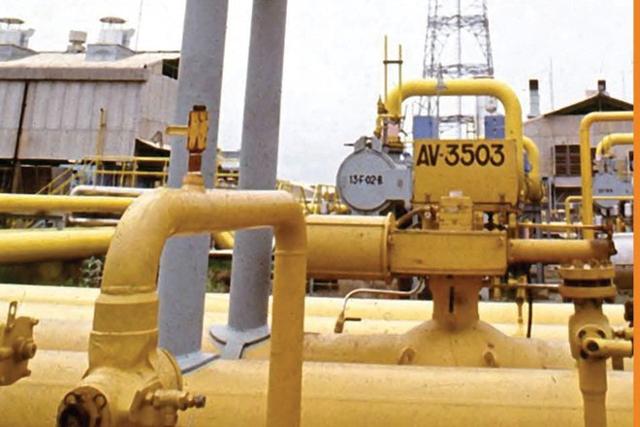Modi lays foundation stone for gas pipeline, but where is the gas?
With an investment of ₹12500 crore, this 2500 km gas pipeline that was announced on Monday will connect West Bengal, Bihar, Jharkhand and UP to the national grid. The project will be undertaken by GAIL, where the centre will fund 40% of the cost of the project.
As Narendra Modi lays the foundation for the east India gas pipeline, this is perhaps the most ambitious step that any government has taken in moving towards replacing the liquid fuel as the preferred choice for transportation and in the kitchen.

With an investment of ₹12500 crore, this 2500 km gas pipeline that was announced on Monday will connect West Bengal, Bihar, Jharkhand and UP to the national grid. The project will be undertaken by GAIL, where the centre will fund 40% of the cost of the project. The project is envisaged to be operational in the next two years. Once completed this pipeline will carry clean fuel from the Dhamra port in Odisha to 40 districts and over 2000 villages. But the question remains: where is the gas?
Top sources in the government say that while domestic production of gas is dwindling, but a sharp increase in global production of gas and its subdued price has ensured that it has helped India’s imports. Global production of LNG (liquefied natural gas) is set to rise from 250 million tonne to 400 million tonne in the next five years. “Energy is a critical input for development. Even if we are not self-sufficient in gas production, for the first time a step is being taken towards creating infrastructure for storage and distribution of gas,” says a top source in the government, who did not wish to be named.
Keeping cooling global price of LNG (liquefied natural gas) in mind, India has already renegotiated its long-term gas purchase deal with Qatar. 45% of India’s gas requirement is imported and any sharp spike in the prices will cost the country precious foreign exchange.
But analysts disagree. “The mood of the market does not show any sign of a sharp increase in prices in the next five to six years,” said Anish De, partner and head of oil and gas in KPMG.
The tilt towards a gas-economy is necessary when India is committed towards reducing its dependence on coal and oil as part of the climate change programme. Gas is accepted as a cleaner fuel and it is cheaper.
Buoyed by RIL’s discovery in the Krishna-Goadavari (K-G Basin) basin, a step towards this was taken during the turn of the 21st century. But a decade later, litigation, arbitration and policy paralysis has taken the steam out of the gas sector. “In the last two years the government has done a credible job as far as making the right policy moves are concerned, this will bring back investment into the sector. You cannot undo what past governments have done,” said Anish De.
“The big difference this time is that the government is looking at identifying new customers for gas. From power and fertilizer plants we are no targeting customers in cities for use as CNG in cars and as a fuel for cooking,” said a top source in the government, who did not wish to be named.
But critics will always be there: “India pays about $6.5/mmBtu for importing LNG but pays around $2.5/mmBtu to domestic producers. Increase in the domestic pricing will give a huge fillip to private investment in the gas sector,” said RS Sharma, former CMD of ONGC.
Oil minister, Dharmendra Pradhan in an earlier interview with HT had countered this point and said, “Our motto is minimum government, maximum governance. Any natural resource policy should have only one intent: focus on the 1.2 billion Indians.”
Stay informed on Business News, TCS Q4 Results Live along with Gold Rates Today, India News and other related updates on Hindustan Times Website and APPs




